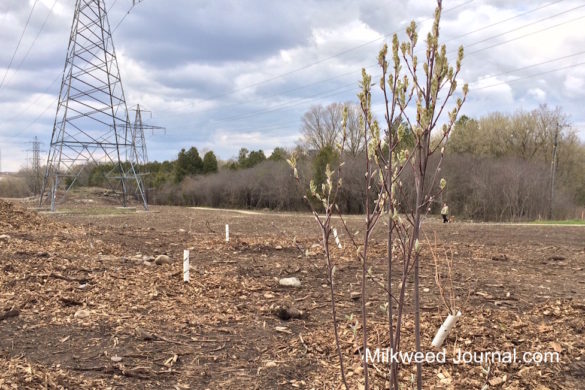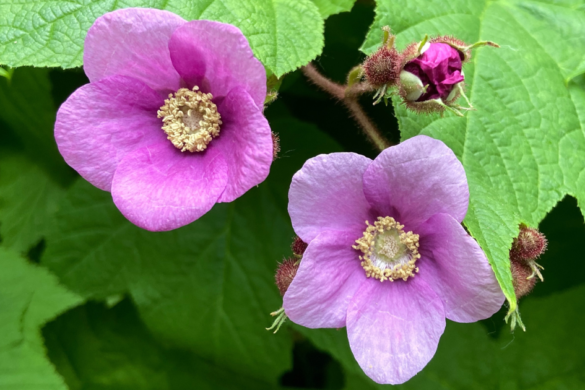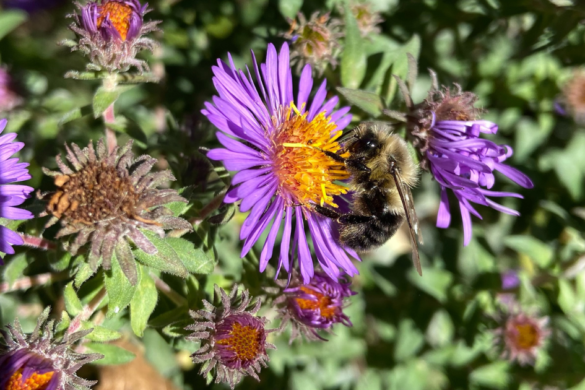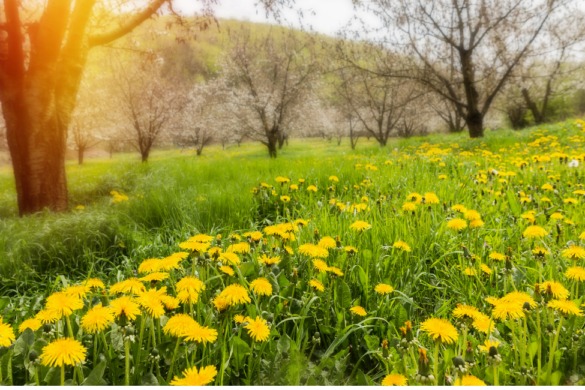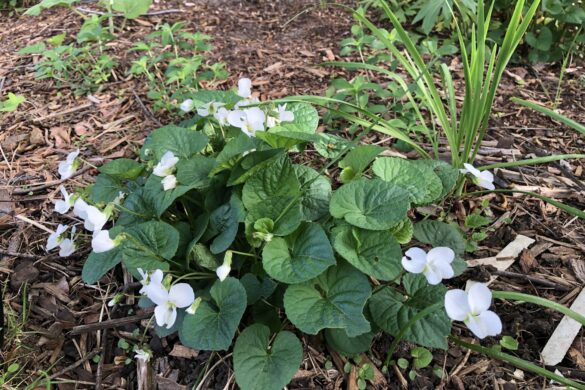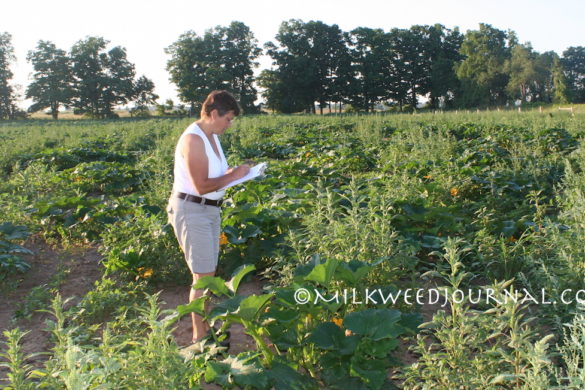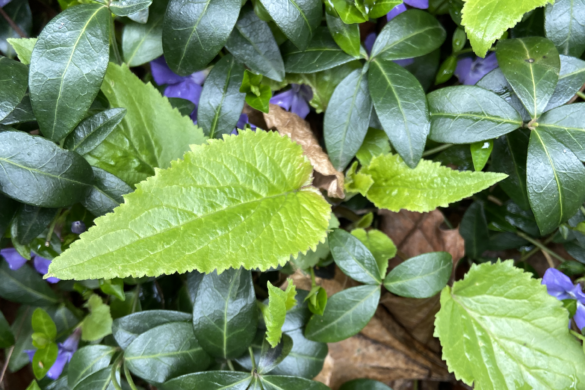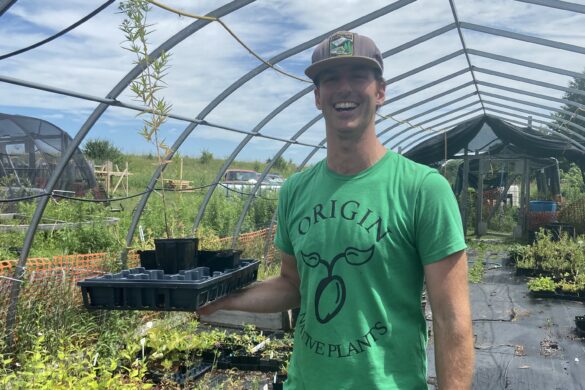A sign that the Cambridge Pollinator Preserve (CPP) is living up to its name comes in the form of ambush bugs lurking on the white blossoms of Queen Anne’s lace nodding in the breeze on a summer afternoon.
These insects typically prey upon pollinators, explains CPP advocate Jim Dyer, as we stroll along the pathway that leads through the preserve, located on the banks of the Grand River in Cambridge’s Riverbluffs Park. “If they’re here, it probably means there’s a good supply of floral-foraging insects around,” he notes.
Dyer, an environmental consultant and founder of Pollination Canada, is a member of Cambridge’s Ancient Mariners Canoe Club (AMCC), which has been working since 2009 to turn this one-hectare site, formerly an off-leash dog park, into a haven for native bees and pollinating flies, beetles and butterflies, as well as songbirds and other wildlife.
The CPP was the first project of its kind to become operational in southwestern Ontario: Cambridge city council gave its blessing in the fall of 2009 and the initial planting of many species of native trees, shrubs and herbaceous perennials followed in the spring of 2010. Native wildflowers were planted in “cells” through holes in cardboard sheets covered with mulch to help them compete with other less desirable plants.
Club members have gathered each spring since to plant a wide range of flowering native trees, shrubs and wildflowers with the goal of providing a continuous display of blossoms with the nectar and pollen these insects need from spring until fall.
Trees and shrubs include serviceberry, chokecherry, red oak, shining willow, dogwoods, ninebark, fragrant sumac, spicebush and elderberry. Redbud trees define the preserve’s southern boundary, a few of which were planted as early as 2009. Wildflowers include wild columbine, common and butterfly milkweed, several varieties of asters and coneflowers, Joe Pye weed, blazing star and woodland sunflower. The tree, shrub and wildflower species were selected by Paul Willms, sustainability planner with the City of Cambridge, who has helped support the project since its inception.
The CPP officially opened in 2012, and includes a permanent outdoor education centre that explains the challenges pollinators are facing, their importance to biodiversity and the food chain, and what we can do to help. The Ancient Mariners have also created a pollinator observation package composed of a field guide, recording form and set of questions & answers, to help raise awareness about the value of pollinators and encourage visitors to chart their observations.
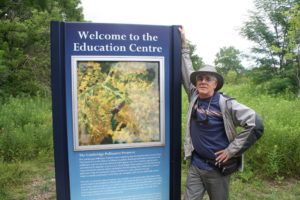
Jim Dyer at the Cambridge Pollinator Preserve Education Centre.
While the CPP is planted with many beautiful flowering plants, Dyer emphasizes that the one-hectare site is a restored natural habitat, not a garden: it receives no weeding after initial planting and is free of pesticides, giving the pollinators a safe place to build nests and feed on nectar and pollen. An abundance of goldenrod, as well as some other non-native perennials, like the Queen Anne’s lace (Daucus carota) mentioned above, have appeared of their own volition and have been allowed to remain because they are valuable sources of pollinator forage.
Protected from future development, the CPP is intended to serve as a reservoir that will allow pollinator populations to build up and spread out to re-populate surrounding areas, providing their important pollination services to both native and cultivated plants.
Dyer credits world-renowned pollinator expert Dr. Peter Kevan, professor emeritus at the University of Guelph, for the origins of the pollinator preserve concept, which is being embraced by an increasing number of communities.
Pollinator habitat projects are also under way in:
- Guelph, at the former Eastview landfill site (first planting completed in September 2013)
- the Town of Mono, and
- Hamilton, where the Pollinators Paradise Project is working with the City of Hamilton, schools, neighbourhood groups, faith communities and other local residents and groups to establish a corridor of native plants across the city to provide food and shelter for pollinators.
Even small patches of wild flowers and native shrubs and trees — whether in home gardens, public spaces or along roadsides — can help sustain pollinators and other wildlife.
A Guide to Creating a Pollinator Patch, by the Ontario Horticultural Association, is an excellent resource for more information on site selection and planting, how to create pollinator nesting sites, and native plant suppliers.
Visit the Cambridge Pollinator Preserve:
The CPP is open to the public at any time. Access is via George Street: watch for the entrance to Riverbluffs Park. Parking is available near the Cambridge Rowing Club and AMCC clubhouse. Please do not collect samples of any kind at the park.
© 2016, Milkweed Journal. All rights reserved. This article is the property of Milkweed Journal. If you would like to use a short excerpt, please provide credit to Milkweed Journal and include a link back to the original post on our site or use the social sharing tools available along the side. Please email us at [email protected] if you have any questions. Thank you!



